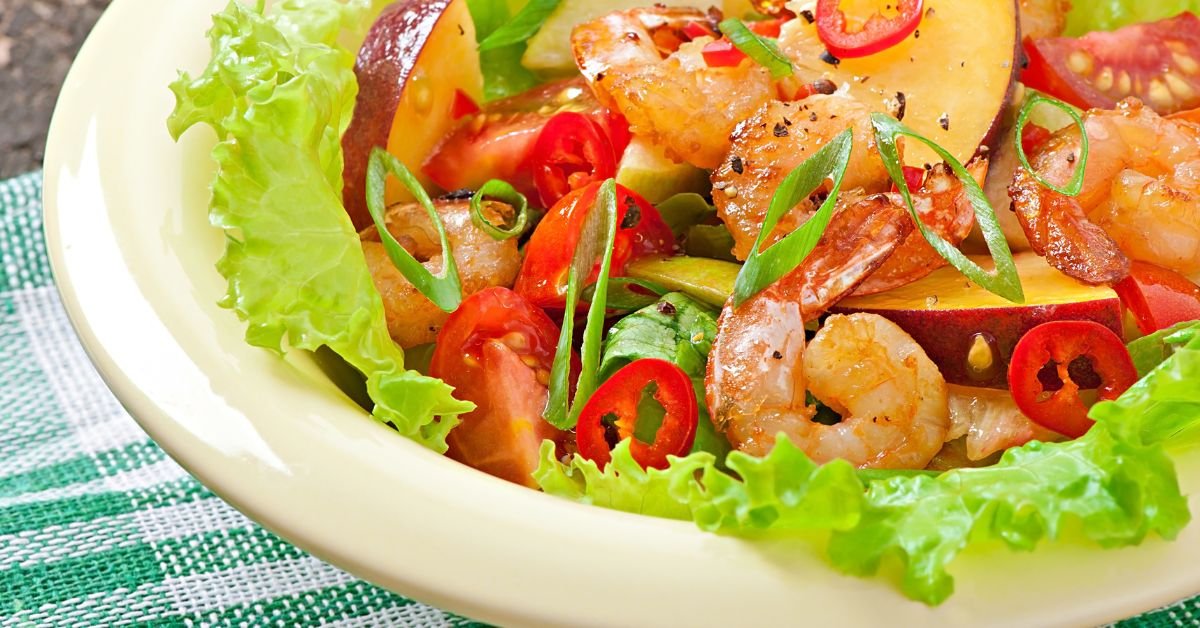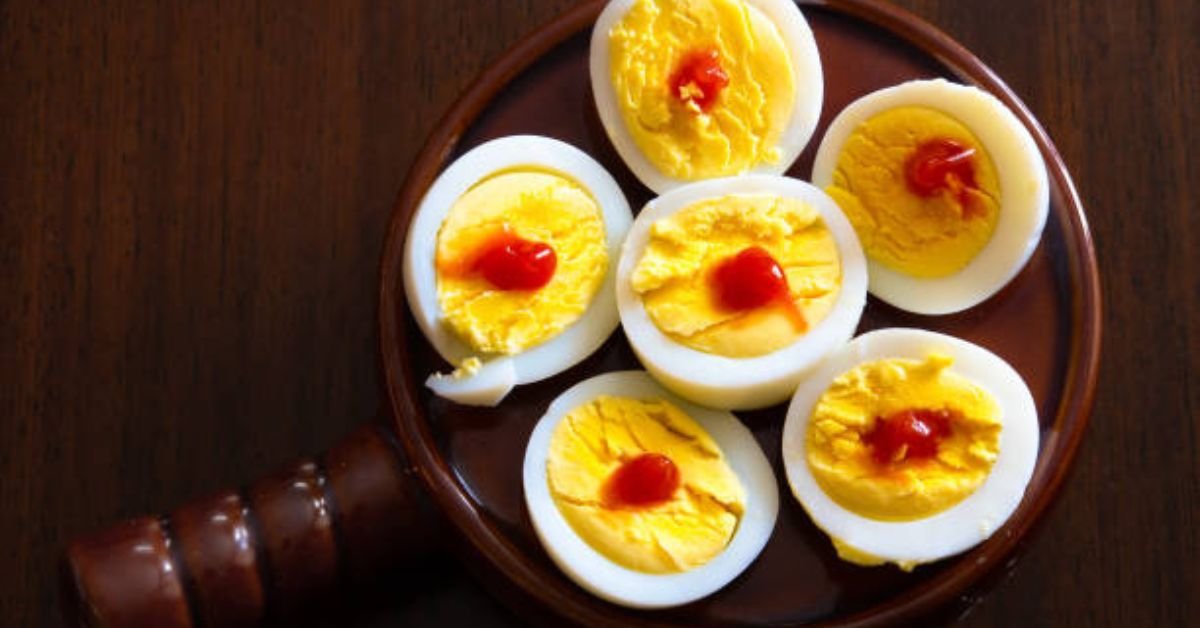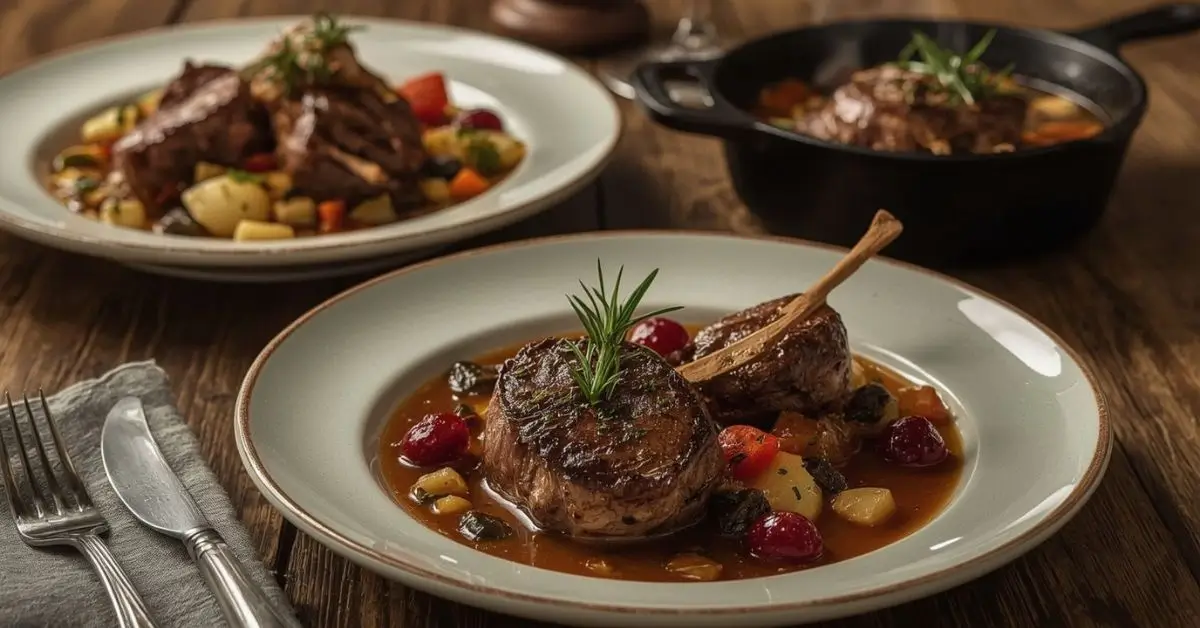FOOD
Zesty Shrimp with Fresh Mango Salsa Delight

Shrimp with Fresh Mango Salsa is a dish that embodies sunshine on a plate. Whether you’re hosting a summer get-together, looking for a healthy weeknight dinner, or simply craving something with a kick of flavor, this meal checks every box. The juicy shrimp, infused with a hint of lime and garlic, pair perfectly with the colorful and tangy mango salsa, resulting in a dish that’s as refreshing as it is satisfying.
A Fusion of Flavors: Why It Works
The natural brininess of shrimp complements the brightness of tropical fruit, making mango an ideal partner. When paired with fresh cilantro, a squeeze of lime juice, diced red onion, and a touch of spice from jalapeños or chili flakes, the salsa brings a crisp contrast that enhances the shrimp’s savory profile. This dish doesn’t just taste amazing—it’s a celebration of textures and aromas, ideal for warm-weather dining or any occasion that calls for something light, yet bold.
What elevates this combination is its flexibility. Whether you grill the shrimp over a barbecue, pan-sear them in a cast iron skillet, or bake them in the oven, they hold up beautifully against the juicy crunch of the salsa. The mango salsa, too, is open to adaptation—add avocado for creaminess or bell peppers for extra crunch, and you’ll still enjoy a balance that hits every note on your palate.

Choosing the Right Ingredients
To make this dish shine, ingredient quality is key. Always go for fresh or flash-frozen shrimp—wild-caught varieties tend to offer better texture and flavor. Look for shrimp that are deveined and peeled to save prep time, but keep the tails on if you’re after an elegant presentation.
When it comes to the mango, aim for one that’s ripe but not mushy. A ripe mango should give slightly when pressed but maintain its shape when diced. Honey or Ataulfo mangoes are particularly prized for their silky texture and rich sweetness.
Fresh herbs like cilantro, and acidic elements like lime juice or a splash of white vinegar, not only brighten the salsa but also cut through the richness of the shrimp. Red onion adds a sharp crunch, while jalapeño or serrano chilies introduce a subtle heat that you can scale up or down depending on preference.
Cooking the Shrimp: Methods that Maximize Flavor
Grilling shrimp gives them a smoky char that pairs beautifully with fruit salsa, making this method ideal for outdoor meals. Simply marinate the shrimp for 10–15 minutes in olive oil, lime juice, minced garlic, chili powder, and a pinch of salt. Thread them onto skewers and grill over medium heat for 2–3 minutes per side until they’re opaque and slightly crisp on the edges.
Alternatively, pan-searing shrimp in a hot skillet with a bit of oil creates a gorgeous caramelization on the outside while preserving their tenderness inside. For a no-fuss approach, roasting shrimp in the oven at 400°F for about 6–8 minutes is another excellent method, especially when cooking in larger batches.
Whichever method you choose, don’t overcook the shrimp—this is a quick protein, and even a minute too long can make it rubbery.
How to Make the Perfect Mango Salsa
Crafting a memorable mango salsa is about balance. Start with diced ripe mango, add finely chopped red onion, freshly chopped cilantro, and minced chili for heat. Squeeze in fresh lime juice and season with a touch of salt and black pepper. Let the salsa rest for 10–15 minutes before serving so the flavors can meld.
If you’re feeling adventurous, introduce extras like diced avocado, corn kernels, or cucumber for a twist. These variations can make the dish more substantial or simply offer a fun change in texture. For an even more gourmet flair, consider roasting the mango or adding a splash of honey to enhance its natural sweetness.
Serving Suggestions for Maximum Impact
Shrimp with mango salsa is as versatile in presentation as it is in flavor. It makes an excellent topping for tacos, nestled in warm corn tortillas and garnished with shredded cabbage or pickled onions. You can serve it over a bed of coconut rice or quinoa for a hearty, balanced meal, or pair it with a crisp salad of arugula and baby greens for a light, low-carb option.
For a casual gathering, arrange the shrimp and salsa on a platter with tortilla chips and lime wedges for a festive appetizer. And if you’re planning a romantic dinner, a simple plating with grilled shrimp fanned out over a mound of mango salsa, accompanied by a glass of chilled white wine—like Sauvignon Blanc or a dry Riesling—elevates the meal to restaurant-quality elegance.
A Healthy, Guilt-Free Indulgence
Beyond its flavor, this dish shines in nutritional value. Shrimp is an excellent source of lean protein, low in calories, and rich in nutrients like selenium, vitamin B12, and iodine. Mangoes contribute vitamin C, antioxidants, and fiber, making the salsa not just delicious, but also heart-healthy.
The combination is naturally gluten-free, and if served without grains or tortillas, it’s also suitable for keto and paleo diets. Swapping in grilled tofu or tempeh for the shrimp offers a plant-based version that doesn’t skimp on taste or texture.

Frequently Asked Questions (FAQs)
Q1: Can I make mango salsa ahead of time?
Yes! You can prepare mango salsa a few hours ahead and store it in the refrigerator. In fact, letting it sit helps the flavors deepen, but it’s best consumed within 24–48 hours for freshness.
Q2: What’s the best way to cook shrimp for mango salsa?
Grilling, pan-searing, and roasting are all excellent methods. Each provides a different flavor profile, with grilling offering the smokiest result.
Q3: Is this dish suitable for meal prep?
Absolutely. You can pre-cook the shrimp and store them separately from the salsa. Just assemble when ready to eat to maintain texture and freshness.
Q4: Can I use frozen shrimp?
Yes. Thaw them under cold water or overnight in the fridge before cooking. Pat dry before seasoning to ensure even browning.
Q5: What other fruits pair well with shrimp besides mango?
Pineapple, peach, and papaya are great alternatives or additions to mango. They maintain the tropical theme while adding variety.
Q6: How do I keep the shrimp from becoming rubbery?
Avoid overcooking! Shrimp cook very quickly, usually in 2–3 minutes per side depending on size. Remove them from heat as soon as they turn pink and curl slightly.
Conclusion
Zesty shrimp with fresh mango salsa delight isn’t just a recipe—it’s a sensory experience that brings together color, taste, and aroma in perfect harmony. Ideal for everything from summer BBQs to elegant dinners, it’s a dish that’s both approachable and impressive
FOOD
Can Dogs Eat Broccoli? A Guide to Safe Snacking

Broccoli is a nutrient-rich vegetable that’s packed with vitamins, minerals, and antioxidants. While it’s a healthy snack for humans, its suitability for dogs is a different story. Broccoli contains a group of compounds called glucosinolates, which can be beneficial for humans but potentially toxic to dogs in large quantities.
Can Dogs Eat Broccoli Raw or Cooked?
So, can dogs eat broccoli raw or cooked? The answer is a bit complicated. While cooked broccoli is generally considered safer for dogs than raw broccoli, it’s still important to exercise caution. Raw broccoli contains more glucosinolates, which can cause gastrointestinal upset in dogs.
The Risks and Benefits of Feeding Broccoli to Dogs
As with any new food, it’s essential to weigh the pros and cons of feeding broccoli to your dog. On the one hand, broccoli is a nutrient-rich snack that can provide health benefits. On the other hand, it can cause adverse reactions in some dogs.

Potential Health Risks
Some dogs may experience adverse reactions to broccoli, including:
- Gastrointestinal upset
- Allergic reactions
- Interference with thyroid function
“I was surprised to learn that broccoli can be toxic to dogs. I always thought it was a healthy snack, but now I’m more cautious about what I feed my furry friend.”
How to Safely Feed Broccoli to Your Dog
If you still want to share broccoli with your dog, here are some tips to follow:
- Start with small amounts to test your dog’s tolerance
- Cook broccoli to reduce glucosinolate content
- Avoid adding seasonings or oils that can be toxic to dogs
FAQs
Q: Is broccoli toxic to dogs?
A: Broccoli contains glucosinolates, which can be toxic to dogs in large quantities.
Q: Can dogs eat broccoli florets?
A: Yes, dogs can eat broccoli florets, but it’s essential to introduce them slowly and in small amounts to prevent adverse reactions.
Q: Is steamed broccoli safe for dogs?
A: Steamed broccoli is generally considered safer for dogs than raw broccoli, as it contains fewer glucosinolates.
Q: Can broccoli cause digestive issues in dogs?
A: Yes, broccoli can cause gastrointestinal upset in some dogs, especially if consumed in large quantities.
Conclusion
Can dogs eat broccoli, it’s clear that this veggie is a bit of a double-edged sword. While it can be a healthy snack for humans, it’s essential to exercise caution when sharing it with your furry friend.
FOOD
Hard-Boiled Eggs: How Long Can You Store Them?

Hard-boiled eggs can be a convenient and healthy snack, but they require proper storage to maintain their quality and safety. When stored in the refrigerator, hard-boiled eggs can last for several days. However, it’s essential to follow proper storage guidelines to prevent bacterial growth and foodborne illness.
The Importance of Refrigeration
Refrigeration is crucial in maintaining the quality and safety of hard-boiled eggs. When stored in the refrigerator, hard-boiled eggs should be kept at a consistent temperature below 40°F (4°C). This will help to slow down bacterial growth and keep the eggs fresh for a longer period.
Factors Affecting the Shelf Life of Hard-Boiled Eggs
Several factors can affect the shelf life of hard-boiled eggs, including:
- Storage conditions: Hard-boiled eggs should be stored in a covered container in the refrigerator to prevent moisture and other contaminants from affecting the eggs.
- Handling: Hard-boiled eggs should be handled carefully to prevent cracking or breaking, which can lead to bacterial contamination.
- Age: The age of the eggs before boiling can also impact their shelf life. Fresh eggs will generally last longer than older eggs.
“I always make a batch of hard-boiled eggs on Sunday evening and keep them in the fridge for quick snacks throughout the week. They’re perfect for grabbing on the go!”

Tips for Extending the Shelf Life of Hard-Boiled Eggs
To extend the shelf life of hard-boiled eggs, consider the following tips:
- Store them in a covered container in the refrigerator.
- Keep them away from strong-smelling foods, as eggs can absorb odors easily.
- Use them within a week for optimal quality and safety.
FAQs
Q: How long are hard-boiled eggs good for in the fridge?
A: Hard-boiled eggs can be stored in the fridge for up to 7-10 days. However, it’s essential to check them regularly for signs of spoilage, such as an off smell or slimy texture.
Q: Can I store hard-boiled eggs at room temperature?
A: No, it’s not recommended to store hard-boiled eggs at room temperature. Bacteria can grow rapidly on perishable foods like eggs when they’re not refrigerated.
Q: How can I tell if a hard-boiled egg has gone bad?
A: Check for signs of spoilage, such as an off smell, slimy texture, or visible mold. If in doubt, it’s best to err on the side of caution and discard the egg.
Q: Can I freeze hard-boiled eggs?
A: Yes, you can freeze hard-boiled eggs, but the texture may change. It’s best to freeze them without the shell and use them in recipes where texture isn’t a concern.
Conclusion
Hard-boiled eggs, it’s clear that proper storage and handling are crucial in maintaining their quality and safety. By following the tips and guidelines outlined in this article, you can enjoy your hard-boiled eggs for a longer period while minimizing the risk of foodborne illness.
FOOD
Best Venison Meals You Can Make at Home

Best Venison meals is one of the most underrated meats. High in protein, low in fat, and filled with micronutrients like zinc and iron, it’s often called the “athlete’s red meat.” In fact, nutritionists now highlight high-protein venison meals as excellent options for muscle recovery and sustained energy.
Unlike factory-farmed beef, venison is often sourced sustainably—either through hunting or specialty farms. That gives it a unique position in the modern food world: delicious, ethical, and healthy.
Venison Dinner Recipes for Every Occasion
Whether you’re preparing a holiday feast or just a Tuesday dinner, venison dinner recipes can be surprisingly versatile. Here are a few standouts:
- Classic Venison Chili: Perfect for chilly evenings, rich in beans, tomatoes, and a slow-cooked game flavor that fills the house.
- Venison Shepherd’s Pie: A twist on comfort food, using venison instead of lamb or beef.
- Pan-Seared Venison Steaks: Quick, elegant, and flavorful when paired with garlic butter.
One home cook shared on social media: “I never thought my kids would prefer deer chili over beef, but now it’s all they ask for.” That’s the power of the right recipe.
Wild Game Meals That Impress
Venison is a staple in many cultures’ wild game meals. In Scandinavia, it’s roasted with root vegetables. In the U.S., hunters prepare venison stews in cast-iron pots over open flames. And in modern kitchens, chefs blend traditional cooking with innovative twists—think venison carpaccio or sous-vide venison tenderloin.
What makes venison stand out? Its earthy, rich taste that pairs beautifully with herbs like rosemary, juniper, and thyme. These natural seasonings balance the meat’s boldness while enhancing depth.
Healthy Venison Dishes
If you’re on a wellness journey, healthy venison dishes might be exactly what you need. Since venison has less fat than beef, it works well for calorie-conscious eaters. Pair it with roasted vegetables, whole grains, or even plant-based sides.
Examples of healthy venison meals:
- Grilled venison medallions with quinoa salad
- Venison lettuce wraps with garlic-lime sauce
- Venison and sweet potato skillet
Not only are these meals nutritious, but they also feel gourmet without being heavy.
Easy Venison Recipes for Beginners
Cooking deer meat doesn’t need to be intimidating. In fact, there are plenty of easy venison recipes that even beginners can master:
- Venison Burgers: Season with salt, pepper, and a touch of Worcestershire sauce.
- Venison Tacos: Quick sauté with onion, chili powder, and cumin.
- Stir-Fried Venison: Thin slices tossed with veggies in soy-ginger sauce.
Tip: Don’t overcook! Venison dries out faster than beef, so medium-rare is often the sweet spot.
Venison Slow Cooker Meals
One of the best tricks for tender, juicy meat is using a slow cooker. Venison slow cooker meals are perfect for busy households.
- Slow-Cooked Venison Stew: With potatoes, carrots, and thick broth.
- Shredded Venison BBQ: A healthier twist on pulled pork sandwiches.
- Venison Curry: Rich spices blend with gamey flavors for a warm, comforting dish.
The low-and-slow method allows connective tissues to break down, leaving the meat fork-tender.
The Best Ways to Cook Venison
So, what are the best ways to cook venison? That depends on the cut:
- Backstrap / Tenderloin → Best grilled, pan-seared, or sous-vide.
- Shoulder / Neck → Excellent for braising or slow cooking.
- Ground Venison → Perfect for burgers, tacos, and chili.
General rule: cook hot and fast for tender cuts, or low and slow for tougher ones.
Venison Comfort Food Classics
There’s something special about venison comfort food. It brings nostalgia and warmth to the table:
- Venison meatloaf with mashed potatoes
- Venison pot roast
- Venison stroganoff with creamy mushroom sauce
Comfort food with venison combines the familiarity of home-style cooking with the excitement of wild game flavors.
Venison Steak Recipes
If you love steak, then venison steak recipes will be your go-to. The key is simplicity:
- Pan-seared with butter and garlic
- Grilled with rosemary and cracked pepper
- Marinated in red wine for 24 hours, then grilled medium-rare
Because venison is lean, it benefits from quick, high-heat cooking to lock in juices.
Deer Meat Recipes Beyond the Basics
Not all deer meat recipes are about steaks and stews. Here are some creative twists:
- Venison jerky for snacks
- Venison breakfast sausage
- Venison lasagna with ricotta and herbs
These dishes show how versatile deer meat can be—from quick bites to full family dinners.
High-Protein Venison Meals
Fitness enthusiasts are turning to high-protein venison meals to fuel workouts and recovery. With nearly 25 grams of protein per serving and less fat than beef, venison is a powerhouse.
Great options include:
- Venison stir-fry with broccoli and cashews
- Venison egg scramble for breakfast
- Venison chili with extra beans for post-workout fuel
Athletes often say that venison leaves them energized without feeling heavy.
Pro Tips for Cooking Venison
- Marinate wisely: Acidic marinades (like red wine or balsamic vinegar) tenderize the meat and reduce gamey flavors.
- Don’t overcook: Medium-rare to medium keeps venison juicy.
- Pair with bold flavors: Mushrooms, garlic, and juniper berries balance venison beautifully.
- Rest the meat: Like beef, resting helps redistribute juices.
FAQ’s
What are the best venison meals for beginners?
Easy venison recipes like burgers, tacos, and stir-fry are beginner-friendly. They use ground meat, which cooks quickly and has mild flavor.
How do you make venison taste less gamey?
Marinate with red wine, garlic, or citrus. Pairing venison with bold flavors also helps balance the gamey taste.
Can venison be cooked in a slow cooker?
Yes, tougher cuts like shoulder or shank are perfect for venison slow cooker meals. They become tender and flavorful after long cooking times.
Is venison healthier than beef?
Yes, venison is leaner, lower in cholesterol, and higher in protein. That makes it ideal for those seeking healthy venison dishes.
Final Thoughts
The best venison meals blend tradition, nutrition, and flavor. From venison steak recipes to comfort food classics, venison proves it’s more than just wild game—it’s a versatile, delicious, and healthy option for any table. Whether you’re cooking a quick weeknight dinner, a hearty chili, or a gourmet feast, venison has a place in your kitchen.
-

 TECH6 months ago
TECH6 months agoApple iPhone 17: Official 2025 Release Date Revealed
-

 BLOG6 months ago
BLOG6 months agoUnderstanding the ∴ Symbol in Math
-

 EDUCATION6 months ago
EDUCATION6 months agoHorizontal Translation: How to Shift Graphs
-

 EDUCATION6 months ago
EDUCATION6 months agoUsing the Quadratic Formula
-

 EDUCATION6 months ago
EDUCATION6 months agoThe Meaning of an Open Circle in Math Explained
-

 HEALTH6 months ago
HEALTH6 months agoGoodNever: Wellness, Simplified
-

 EDUCATION6 months ago
EDUCATION6 months agoWhy Does m Represent Slope?
-

 EDUCATION6 months ago
EDUCATION6 months agoHow to Solve Quadratic Equations 2
